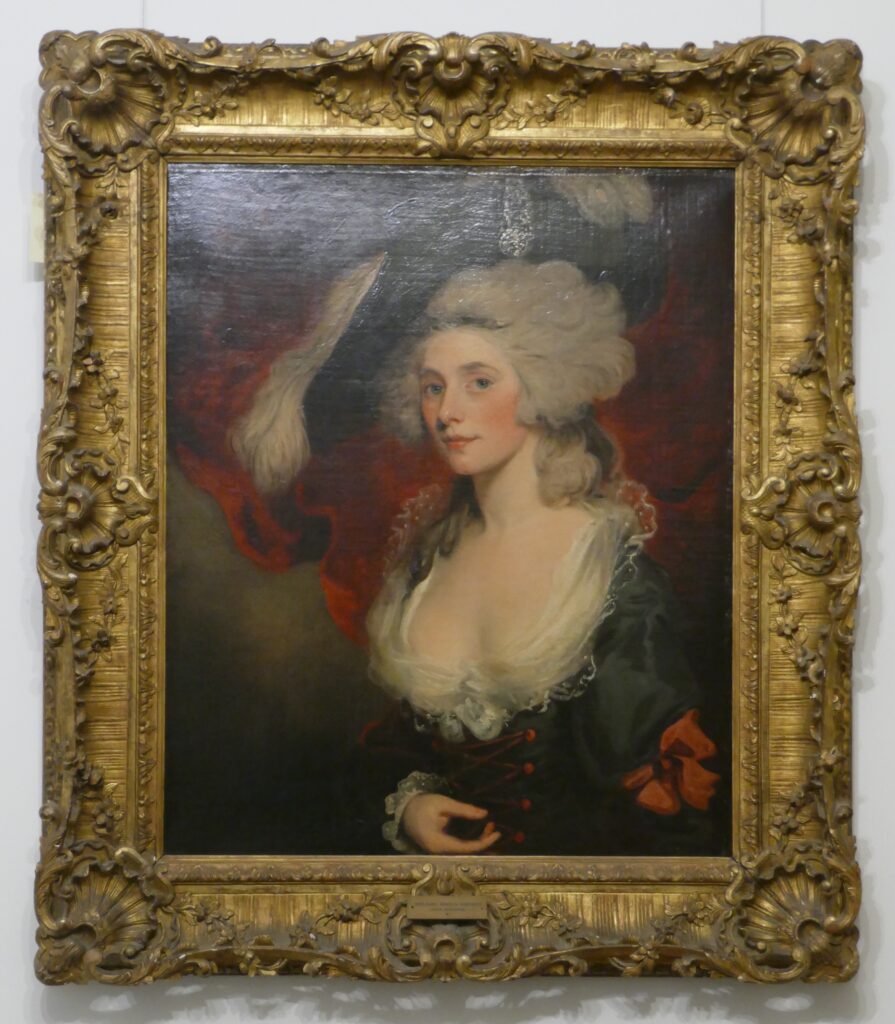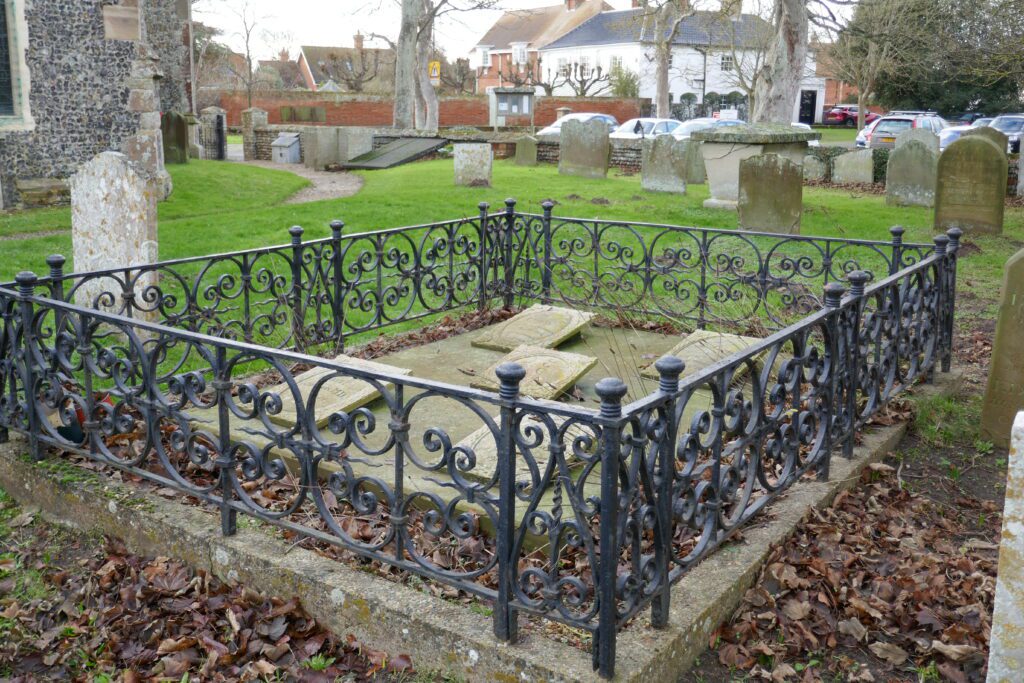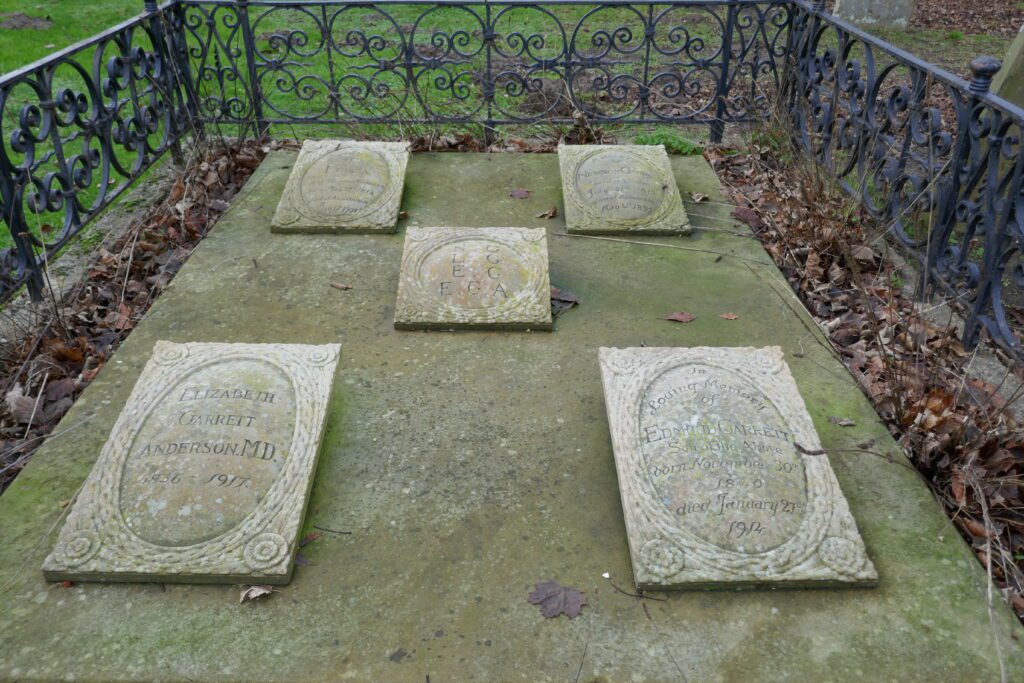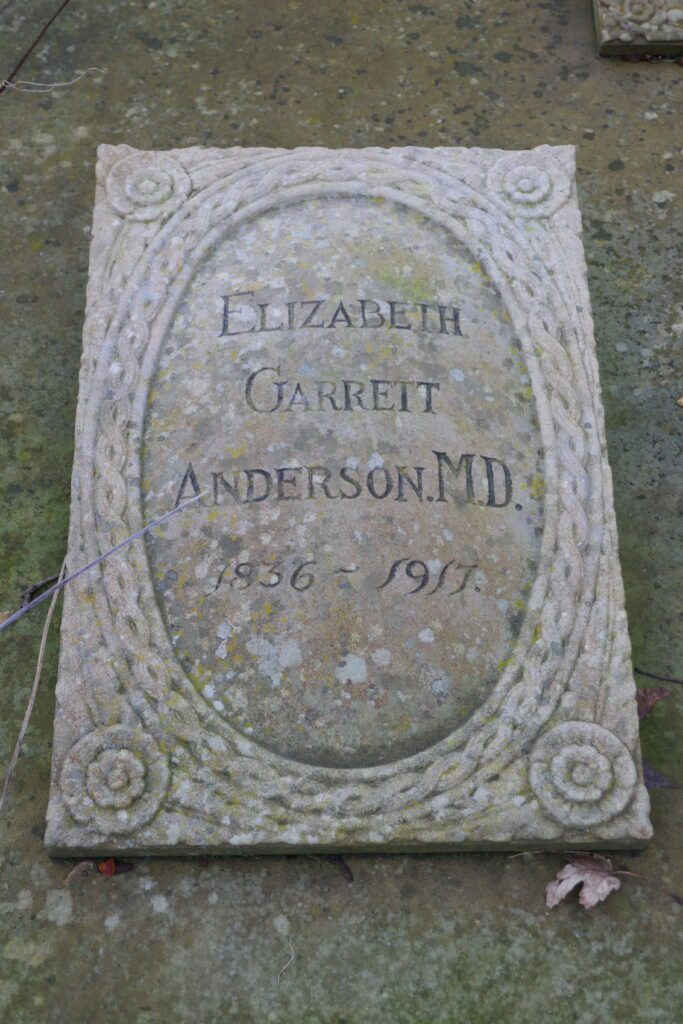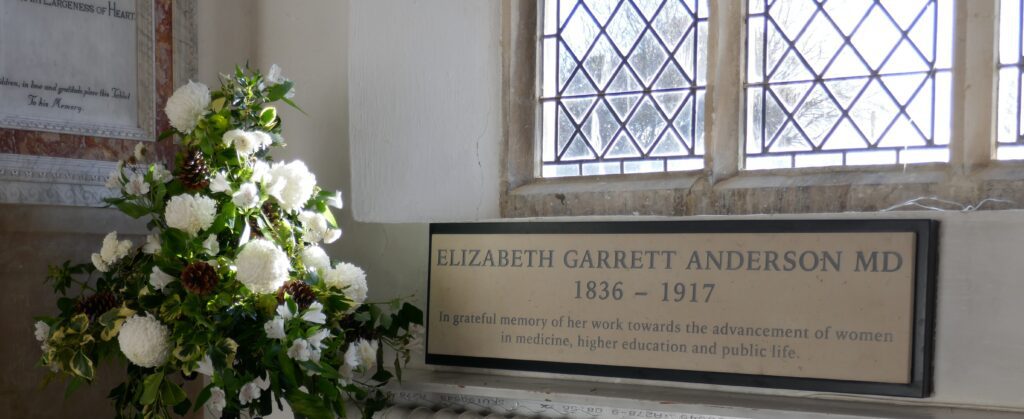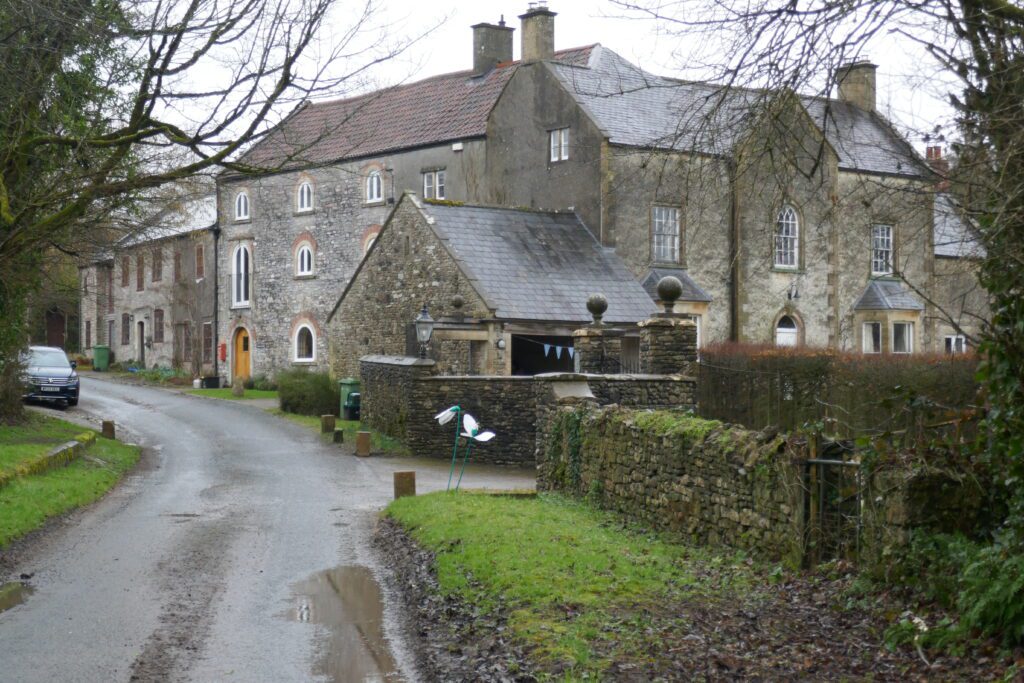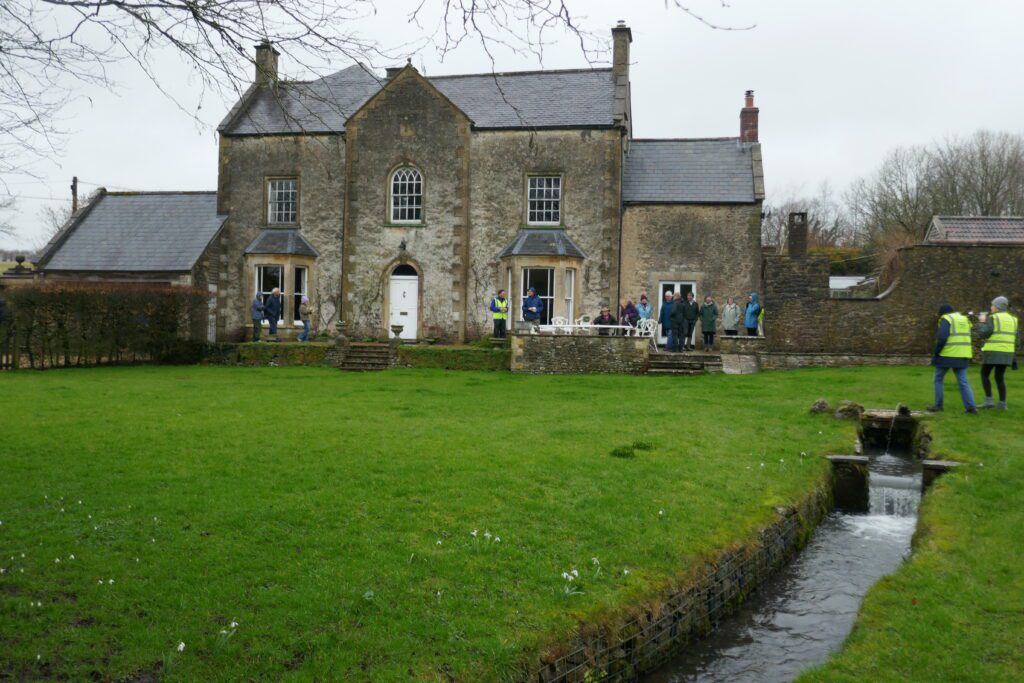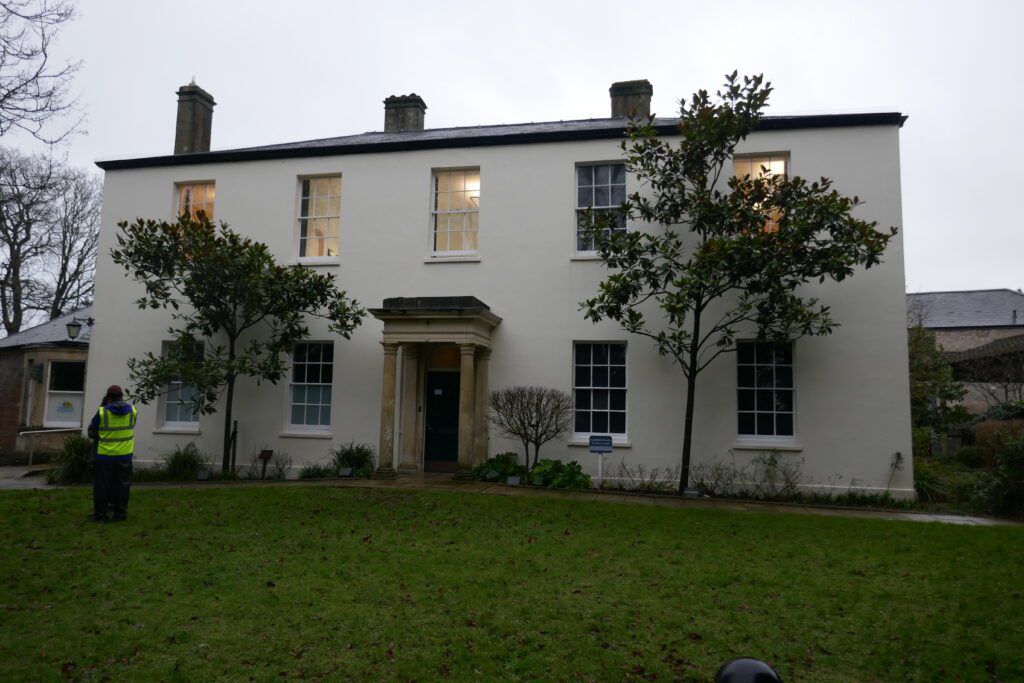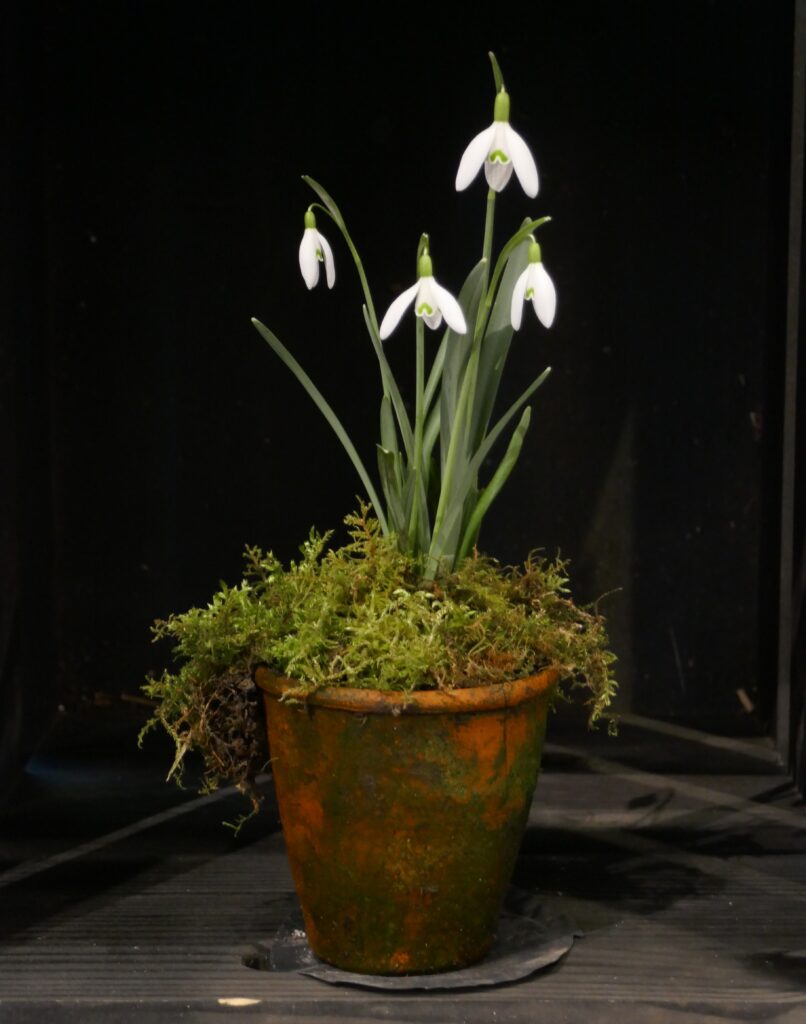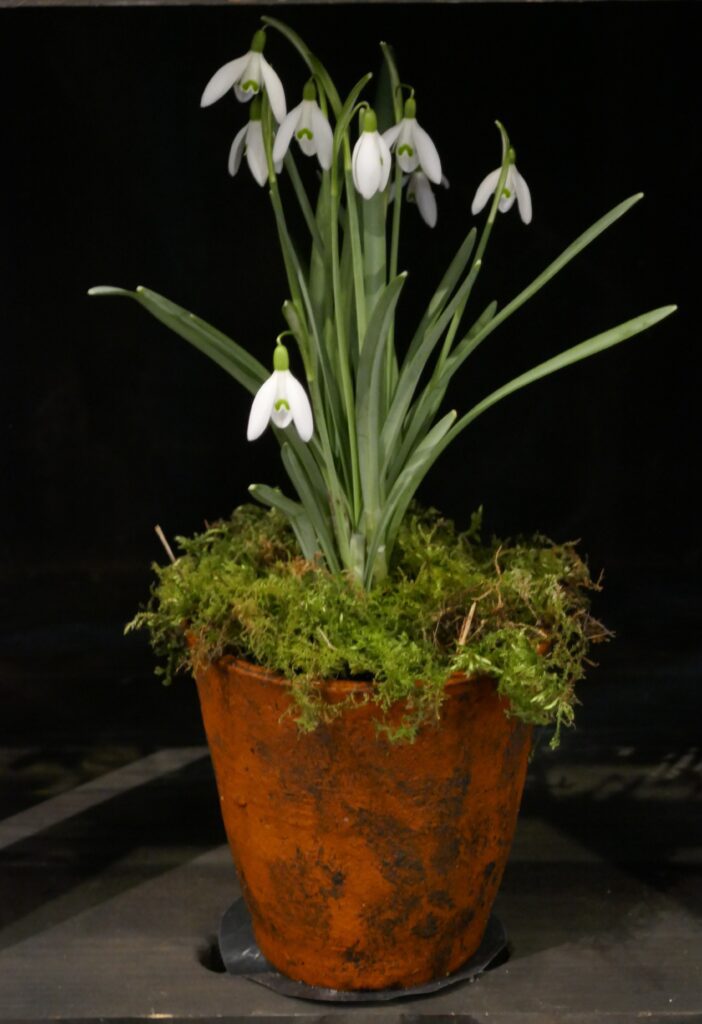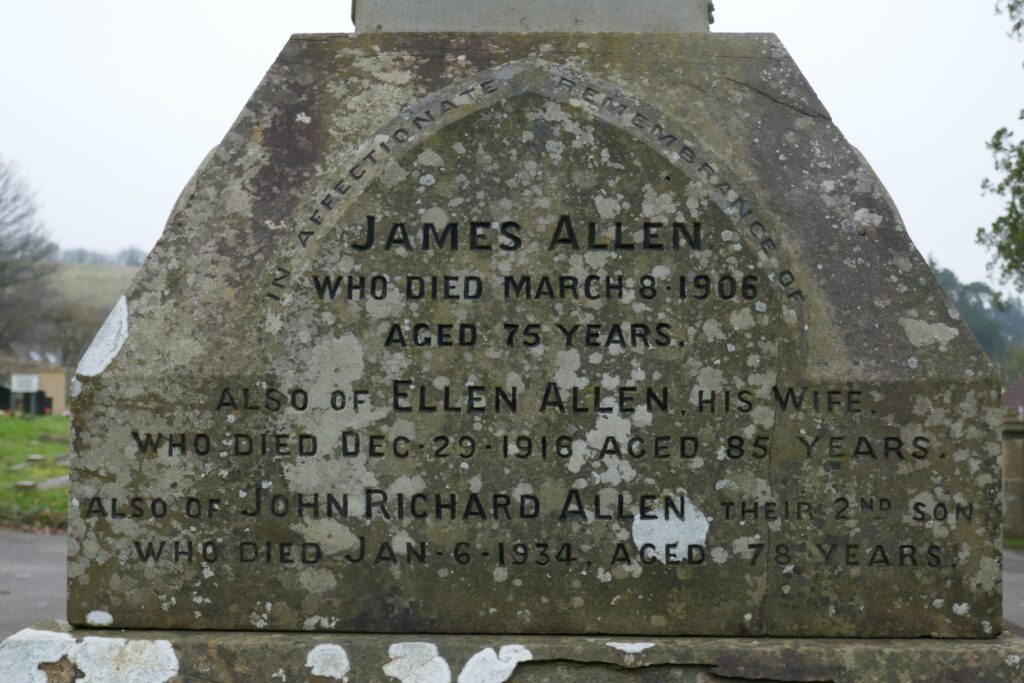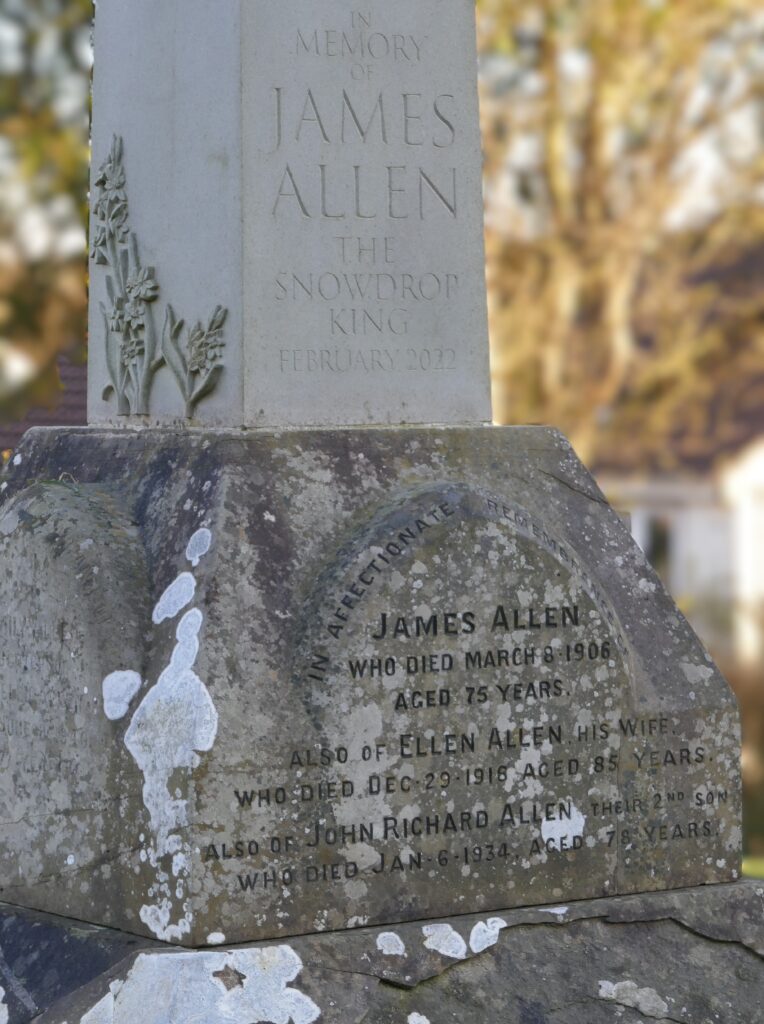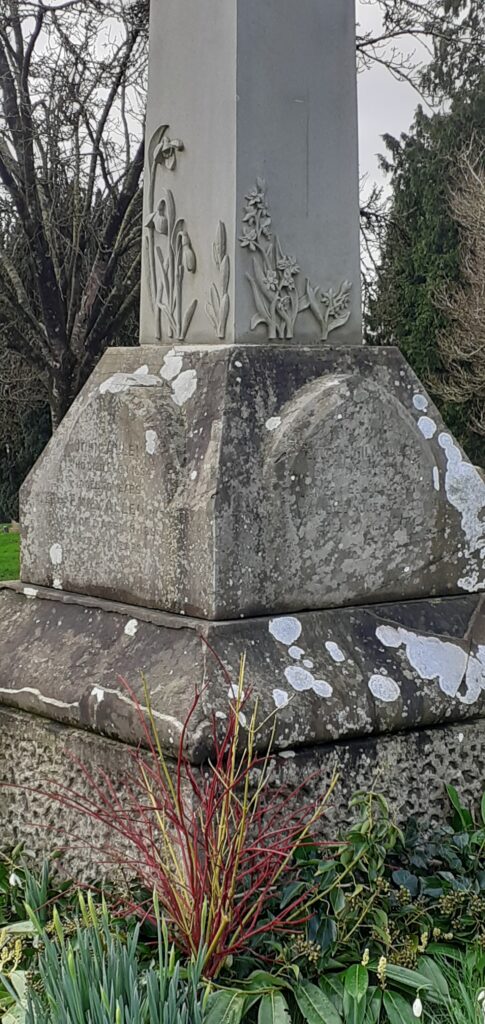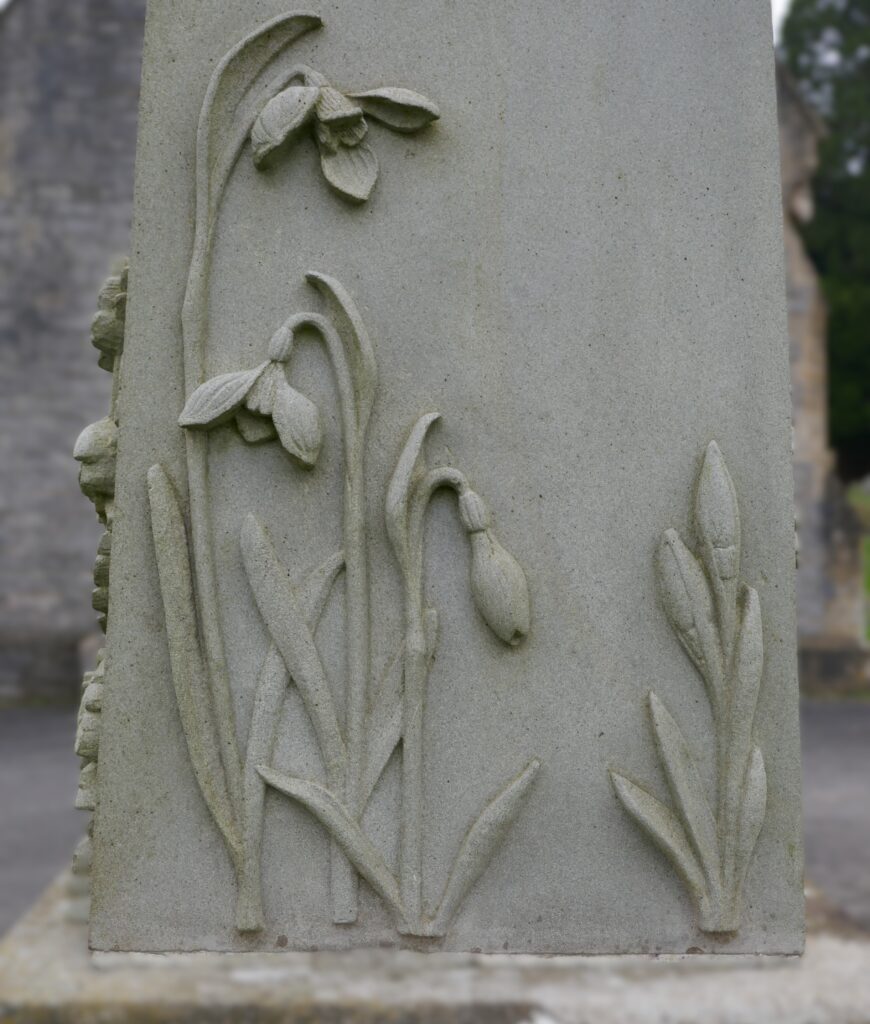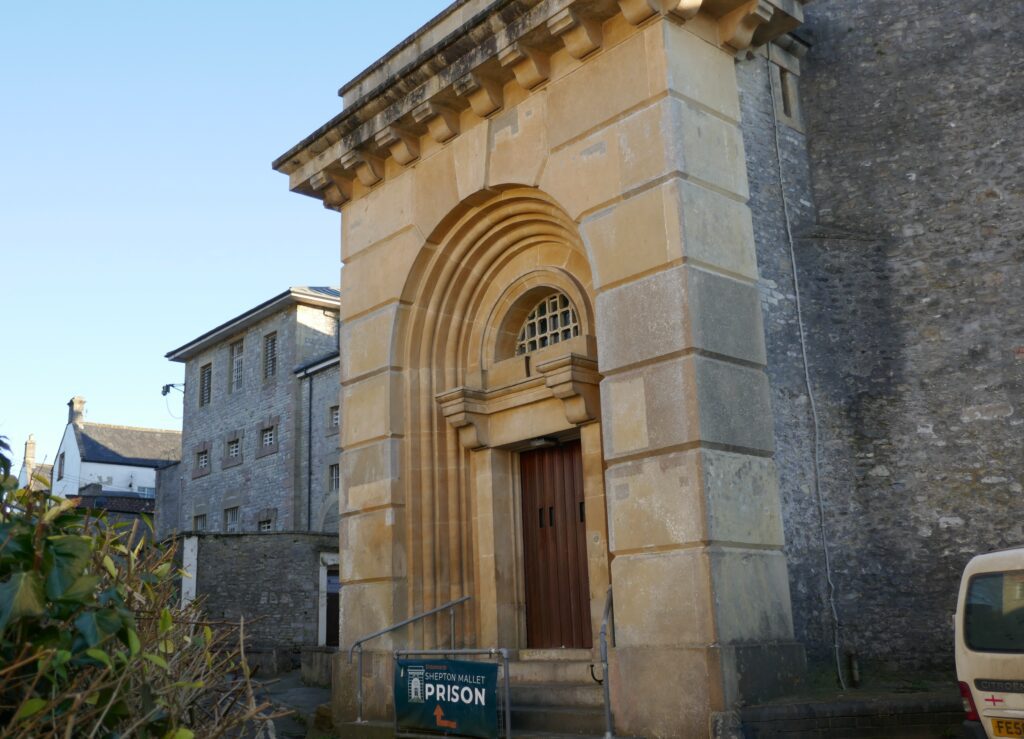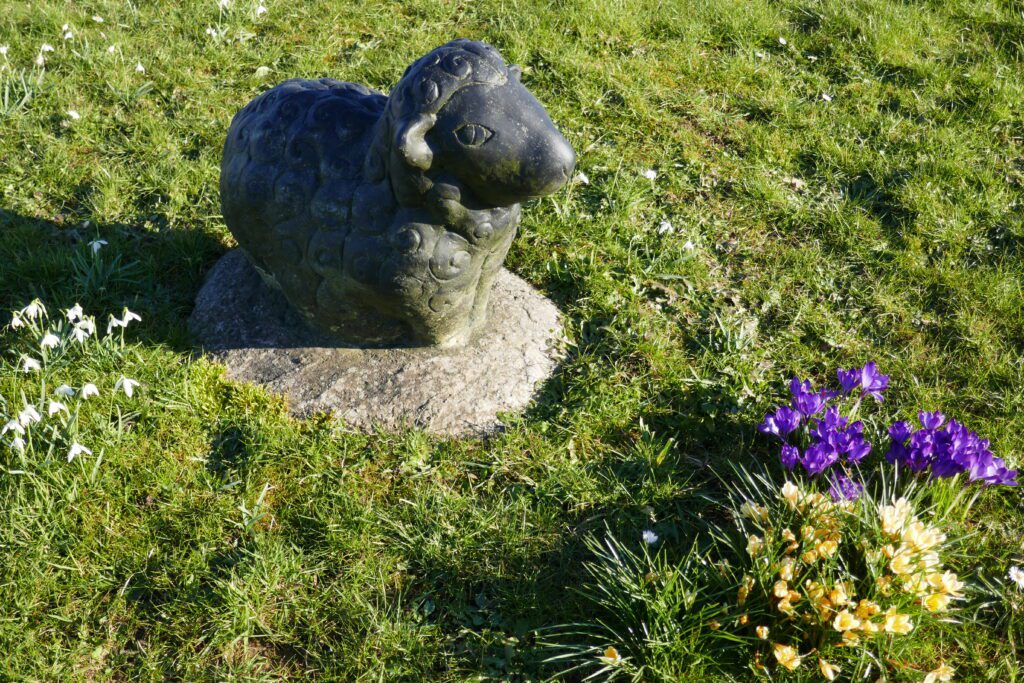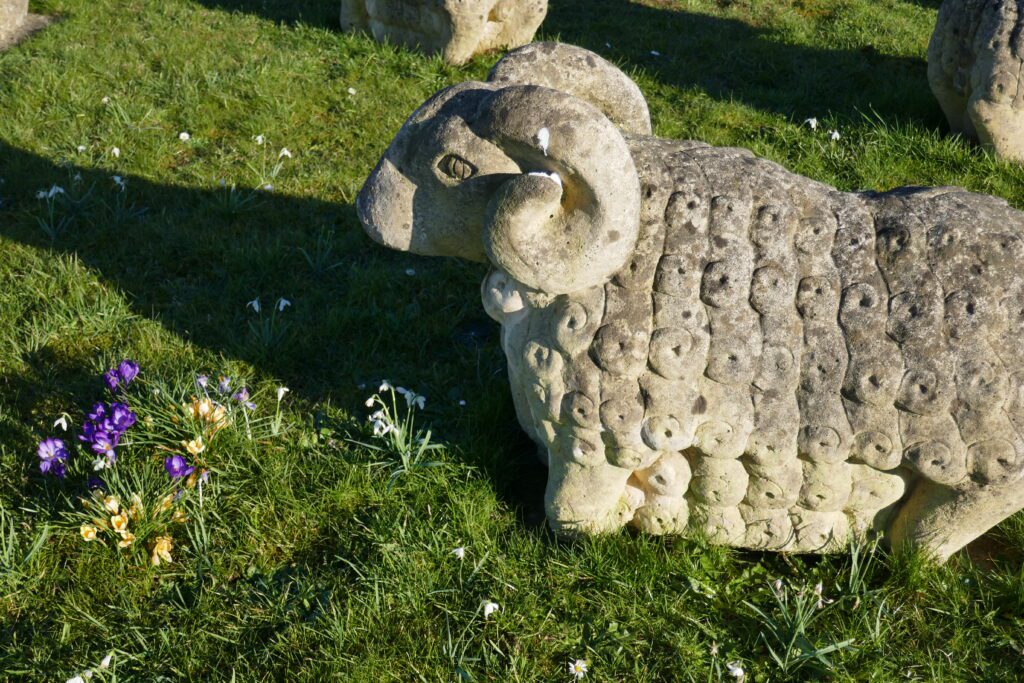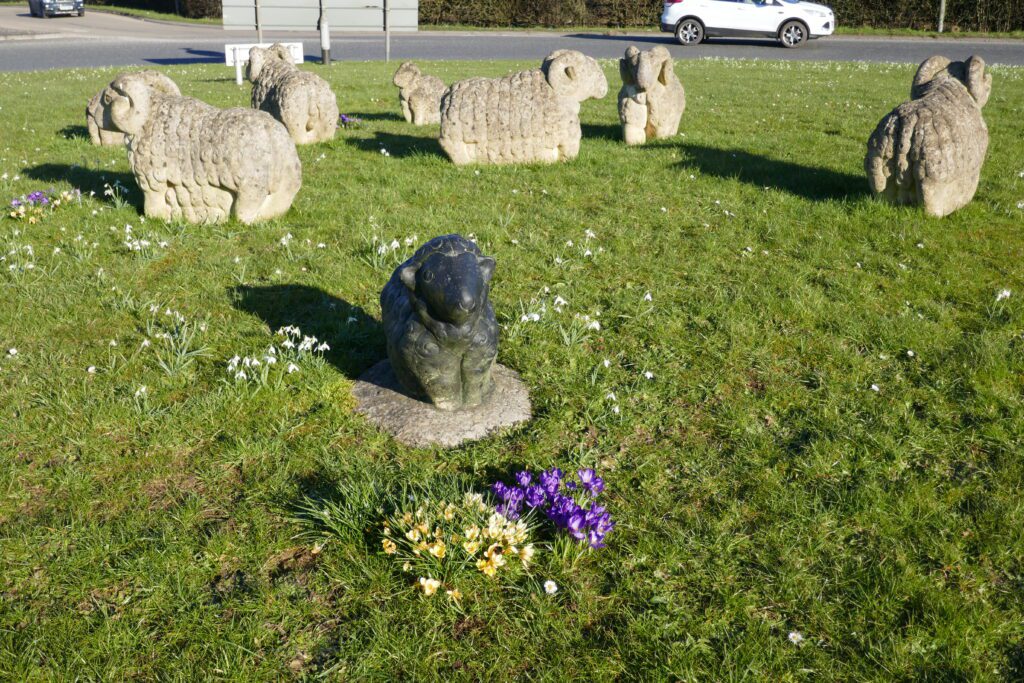The village of Chawton in Hampshire is best known today for its association with Jane Austen. Her brother inherited a sixteenth century manor house in the village. He stayed there only occasionally, but his mother and sisters became permanent residents in the former bailiff’s cottage and visited Chawton House whenever he was in residence.
Jane Austen’s mother, Cassandra, and her elder sister, Cassandra Elizabeth, are both buried in the churchyard of St. Nicholas in the village.
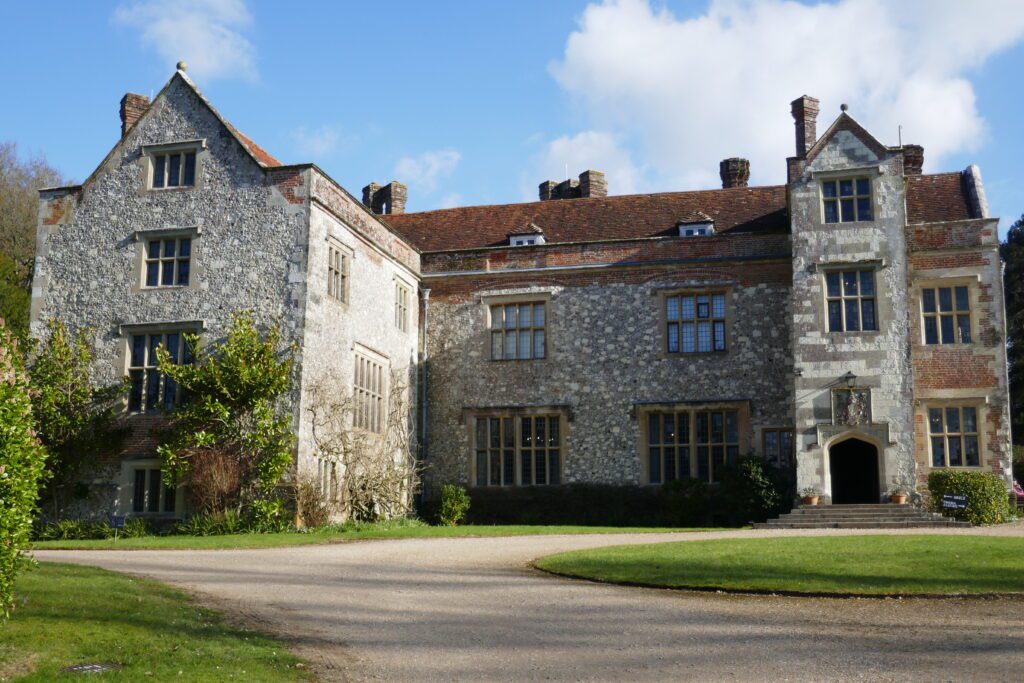
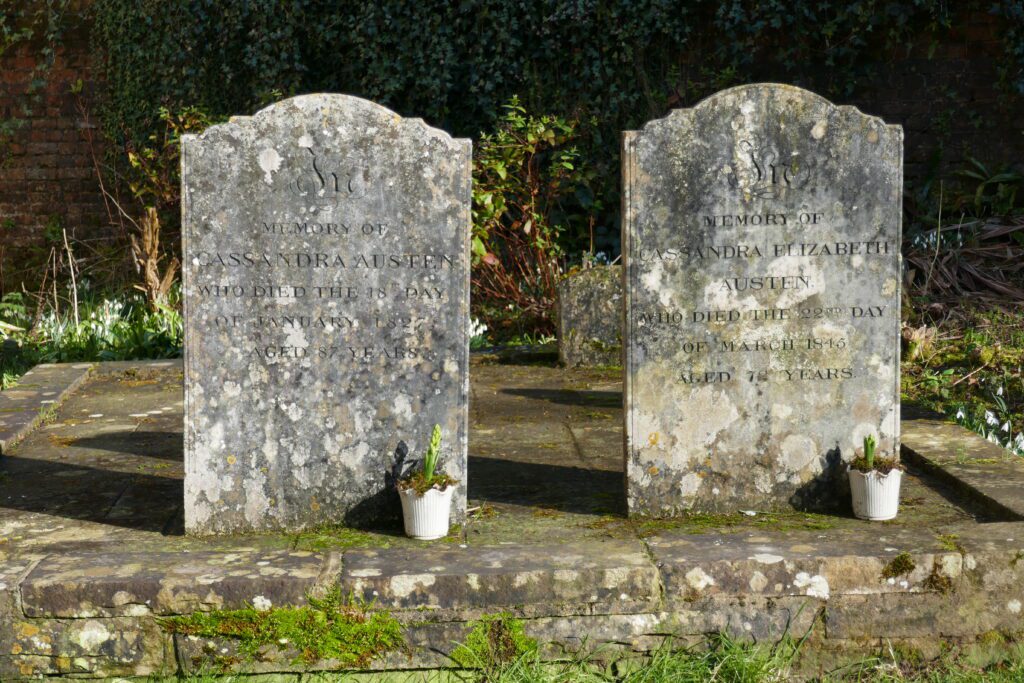
But I did not visit Chawton in search of the Austens. In 1992 Chawton House, by then in poor condition, was sold to an American businesswoman, Sandra Lerner. She restored the house and established a research library and study centre with the rather cumbrous title The Centre for the Study of Early Women’s Writing 1600-1830.
The contents of the library include Sandra Lerner’s own extensive collection of early and rare editions of women’s writing. Regular exhibitions highlight different writers: the centre is currently presenting Mary Robinson, more commonly known as Perdita.
Mary was born to a well-heeled family in Bristol in 1758, but her father lost his money following an ill-advised investment in a whale fishery in Labrador. When he returned from Canada, he left his wife and children to live with the mistress whom he had brought back to England. Mary’s mother moved to London with her children and set up her own school. There, Mary, who had received a better education than most girls of her generation, started teaching at the age of fourteen. Her father, however, despite deserting his family, resented this public acknowledgement of their poverty and forced the closure of the school.
Mary had always been attracted by the theatre and through connections of her mother secured an introduction to David Garrick. Impressed by her abilities, he began to train her: she was to play Cordelia to his Lear. Meanwhile however she had met Thomas Robinson, an articled clerk purportedly expecting an inheritance. She agreed to marry him, possibly under pressure from her mother, who was acutely aware of the dangers of a stage career at a time when “actress” was often a euphemism for prostitute.
The marriage was not a success. The inheritance did not materialise. Married at fifteen, Mary had a child at sixteen, and at seventeen, along with her husband and child, was housed in the Fleet prison for debt.
The debts had piled up as both Thomas and Mary had pursued a recklessly extravagant lifestyle. There was an expensive address, an open top carriage, clothes, jewellery, evenings at Ranelagh and Vauxhall gardens, and for Thomas the races, gaming houses and brothels. Quintessential Georgians, in stark contrast to their gloomy Victorian successors, they had an infinite capacity for living in the moment, ever hopeful that their fortunes would turn tomorrow, combined with an unattractive habit of tapping other people for “loans.” Detention in a debtors’ prison was an experience so widespread that it often seems to have served as little more than a rite of passage for large numbers of Georgians.
When it came to survival in the Fleet, however, Mary proved herself to be of superior mettle to Thomas. She accepted work, which he had refused, copying legal documents, and she published her first volume of poetry.
After Thomas was discharged from the Fleet, the playwright and theatre manager Sheridan encouraged Mary to return to the theatre. With characteristic generosity Garrick came out of retirement to tutor her again, and Mary made her stage debut as Juliet at Sheridan’s Drury Lane theatre.
Her subsequent stage career was an enormous success; particularly popular were her performances in the “breeches roles,” cross dressing as Viola in Twelfth Night and Rosalind in As You Like It. At the same time, she published her second volume of poetry.
In 1779 Sheridan revived Florizel and Perdita. This was Garrick’s adaptation of the final two acts of Shakespeare’s The Winter’s Tale, the story of Prince Florizel and his love for the shepherd’s daughter Perdita, who of course turns out to be a princess.
The Prince of Wales, later George IV, came to see the play and promptly declared himself “head over heels in love” and “blinded by passion.”* One of his most unappealing characteristics was his capacity for self-deception. For the previous six months he had been declaring his love for his sisters’ governess, Mary Hamilton, threatening to commit suicide if she rejected him. Before he left for the theatre that night, he had sent her a letter declaring his undying love. When he returned, a second letter abruptly reduced Mary Hamilton to the status of a friend to whom he confided his new passion. In his letters to Mary Hamilton, he had called her Miranda and signed himself Palemon, now he began to write love letters to Mary Robinson calling her Perdita and signing them Florizel. Originality was alien to him.
Though Mary Robinson was flattered, she was not a fool. She held out against his blandishments and a welter of letters (her biographer notes that Palemon had penned a letter every three days to Mary Hamilton, “establishing a pattern he would far surpass when taking the name of Florizel.”**) reminding him that if they were to have a “public attachment” she would have to abandon her career and be financially dependent on him. After six months he sent a bond promising to pay her twenty thousand pounds when he came of age, and she retired from the stage to become his mistress.
As Perdita, Mary enjoyed her fame although it was tinged with notoriety, and she was frequently caricatured in the press. She spent lavishly and conducted a simultaneous affair with Lord Malden. When predictably the prince moved on, as he soon did, first to Elizabeth Armistead, then via Grace Dalrymple Eliot to Maria Fitzherbert, she was left seriously in debt. But she had held on to that slew of letters, which she now threatened to publish, and while denying that her motive was mercenary, negotiated a payment of five thousand pounds for their return. Moreover, she still held the bond.
It is hard to see her as a complete victim, though she did try to present herself as such, for in many respects she and the prince were cut from the same cloth, notwithstanding his greater advantages. Her capacity for self-dramatisation was congruent with his. Once she had secured the money, she sat for her portrait with Gainsborough who portrayed her as a pensive, abandoned beauty, clutching a miniature of the prince. Then she purchased a new carriage and headed for Paris.
In Paris she was welcomed as a celebrity, found new lovers, made the acquaintance of Marie-Antoinette, and returned to London bearing the latest fashions. Perdita introduced the white muslin shift dress, high-waisted and tied with a silk sash, which became known as the Perdita chemise, and which quickly replaced the paraphernalia of hoops and stays. All those Jane Austen heroines who appeared a few years later in their muslin frocks were, like everyone else, following the trend set by Perdita. No modern-day influencer can compare with Perdita as a leader of fashion: there were Perdita hats, gowns, handkerchiefs, stockings. Where Perdita led, society followed.
The prince may have wearied of her, but Perdita was at the height of her fame and popularity. She was painted by Hoppner, Reynolds, and Romney. There was an expensive new address, carriages, appearances at the theatre, opera, pleasure gardens and parks. Everywhere she met with admiration and emulation. Though there was always salacious gossip about her, she had learned to orchestrate the press to her advantage.
She continued her long running affair with Lord Malden and began new affairs with Banastre Tarleton, recently returned from fighting for the British in the American War of independence, and with Charles James Fox, the Whig MP. When the affair with Malden ended, she secured another annuity. Tarleton meanwhile ran up gambling debts and she “borrowed” money from Fox on his behalf.
But then things began to go badly for Perdita. Hearing a rumour that Tarleton had fled for the continent to escape his creditors, she set out in pursuit of him. While travelling she contracted rheumatic fever resulting in severe arthritis which gradually deprived her of the use of her legs. She was only twenty five years old. When the prince came of age Perdita should have been able to cash the twenty-thousand-pound bond, but Florizel prevaricated, eventually agreeing to an annuity of £500 in lieu – it was seldom paid. As she ran into financial difficulties, combined with lameness and some loss of her looks, the press increasingly pilloried and denigrated her.
With considerable fortitude, she reinvented herself as a poet, novelist, and playwright. Her early poems were influenced by the effusive, flowery, writings of the Della Cruscans and her early novels were gothic money spinners, but Mary was writing for money, and she was successful.
Later she moved to narrative poetry much admired by Coleridge, and the Monthly Review dubbed her “The English Sappho.” Her novels ridiculed the hypocrisy of fashionable society and incorporated political themes of inequality and discrimination. Mary Wollstonecraft reviewed them with enthusiasm.
By the time Tarleton left her, Mary had become an independent woman of letters. She corresponded with William Godwin discussing liberty and reason. Under Wollstonecraft’s influence she adopted feminist causes, critiquing women’s exclusion from parliament, double sexual standards, and prohibitions on physical exercise for women. She condemned domestic drudgery, advocating a university for women and their right to own their own property.
After her death Mary’s writing fell from fashion, yet while the early work was sentimental, the analysis of misogyny in her later work anticipates both the first and second waves of feminism. In “A Letter to the Women of England, on the injustice of mental insubordination” she elucidated the male disdain for intellectual women:
There are but three classes of women desirable associates in the eyes of men: handsome women: licentious women: and good sort of women. The first for his vanity; the second for his amusement; and the last for the arrangement of his domestic drudgery. A thinking woman does not entertain him; a learned woman does not flatter his self-love by confessing inferiority***
In her memoirs Mary presented herself as a victim of male deceit and contempt. There was some truth in this, but Garrick and Sheridan both recognised her talent, while Coleridge and Godwin accorded her respect and praise. Mary was far more than a victim: she was clever, talented, shrewd, and as capable of self-deluding sophistry as the more unattractive men in her life. And if she is remembered today more as an actress, fashion icon, and mistress, than for her writing, she herself played a key role in the spinning and promoting of her early celebrity.
Mary Robinson was only forty-three when she died of heart failure and was buried in the churchyard at Old Windsor. Only two people attended her funeral. Yet when I visited the tomb the flowers beside it indicated that, two hundred and twenty five years after her death, Perdita, Mary Robinson, still has her admirers.
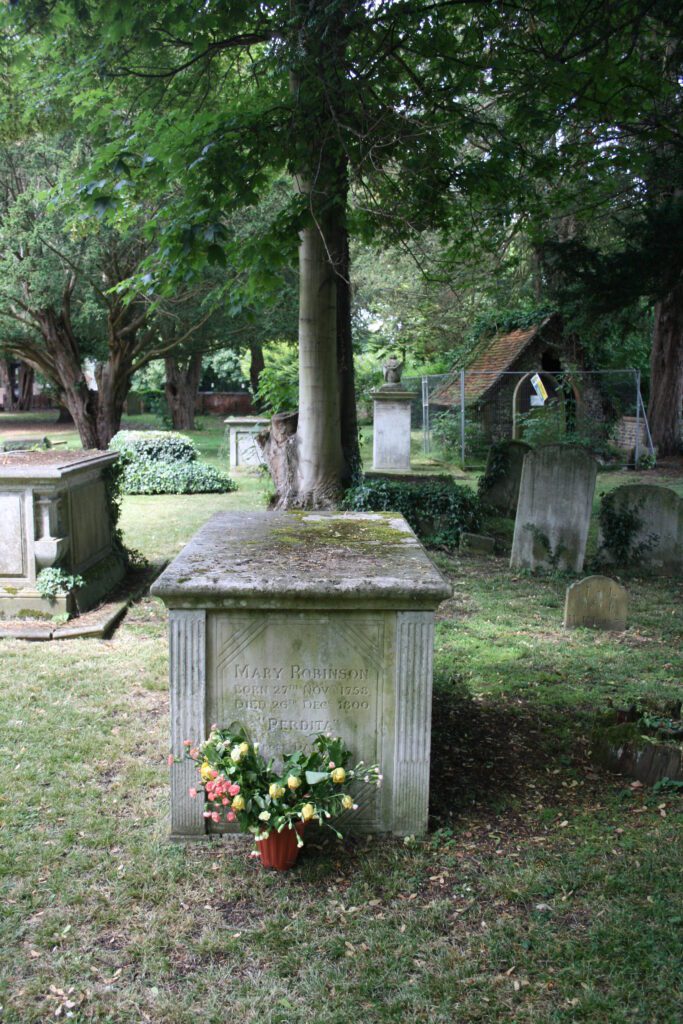
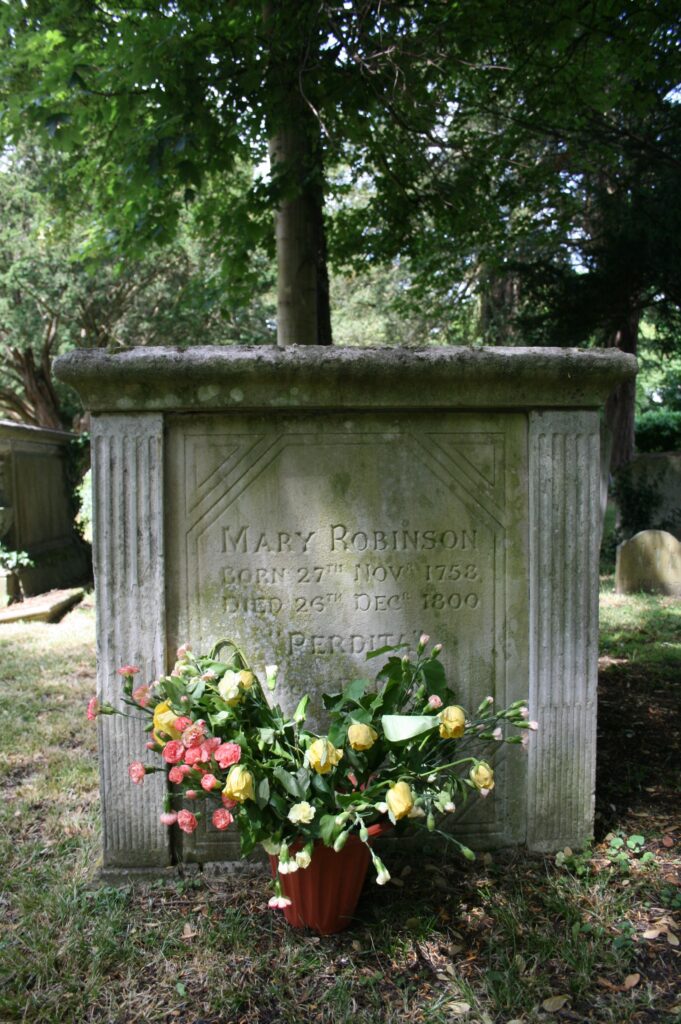
*Quoted in Paula Byrne, Perdita, the Life of Mary Robinson, Harper Collins, 2005, p.110, p.113.
**ibid. p.116
***ibid. p.170
For details of Chawton House and the exhibition on Mary Robinson see https://chawtonhouse.org
